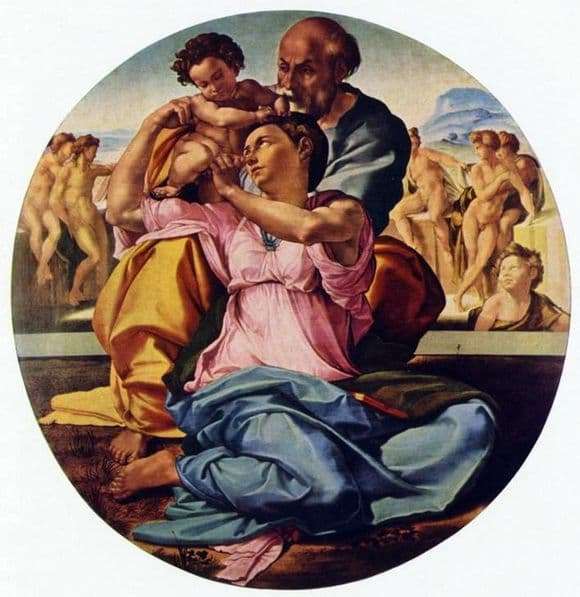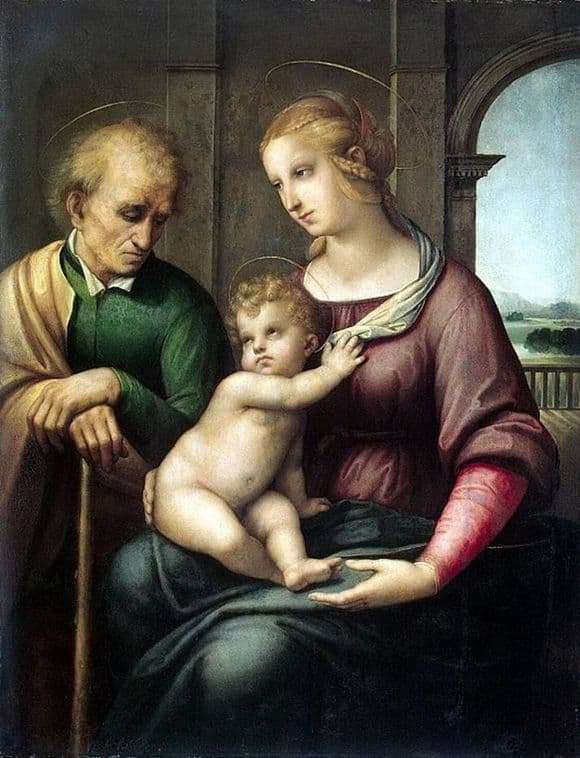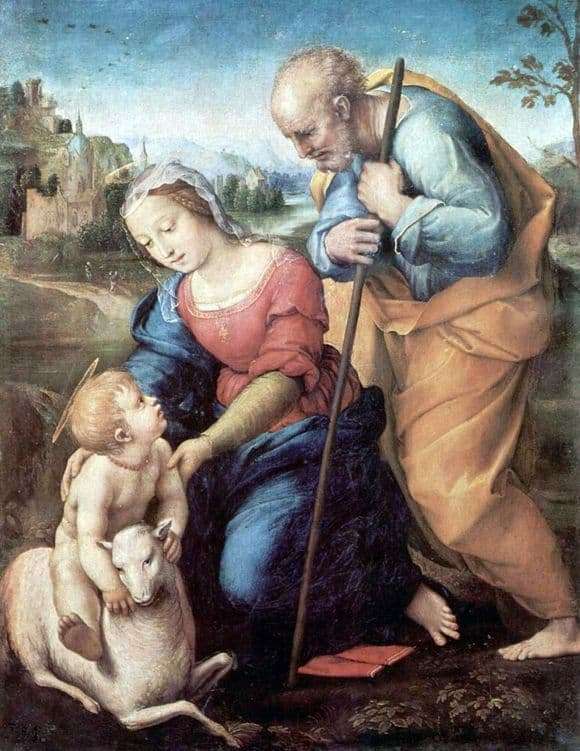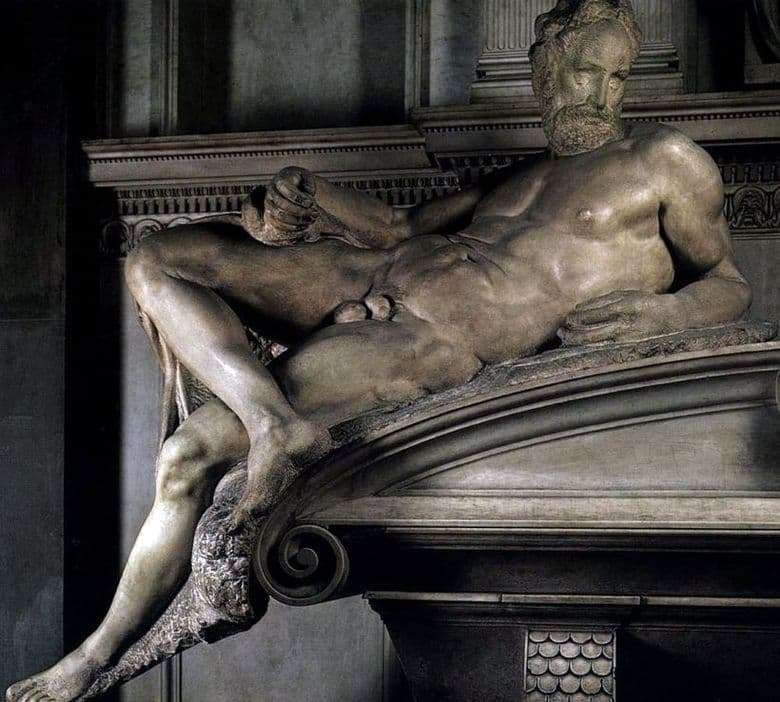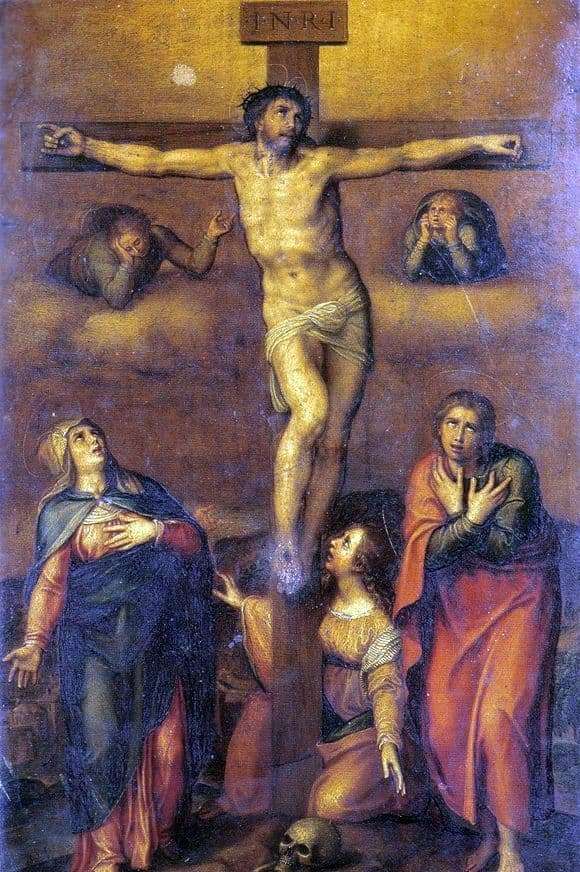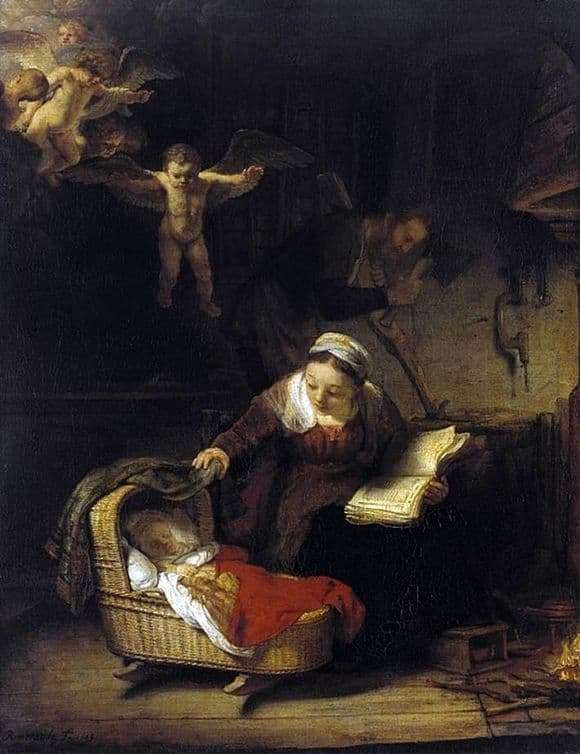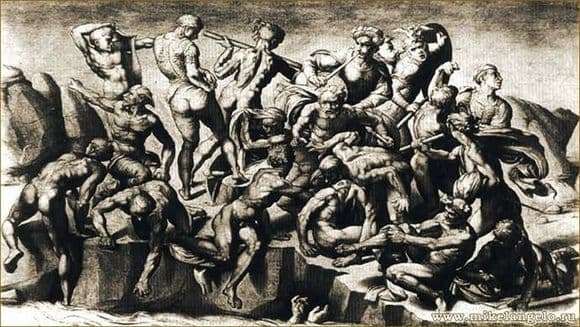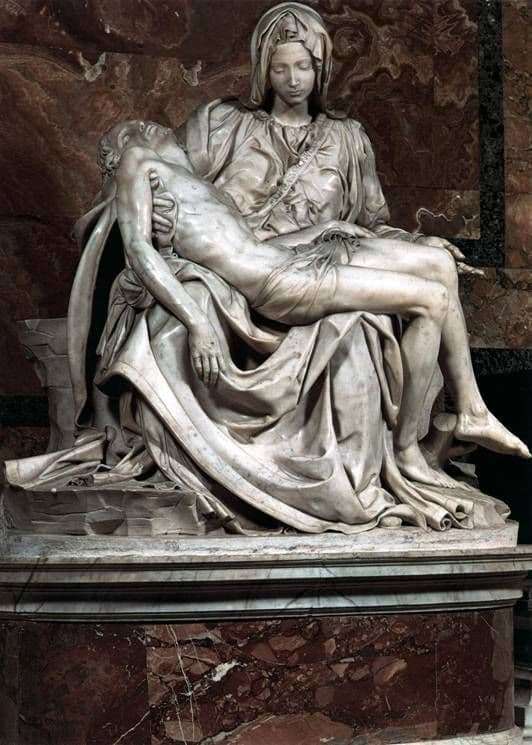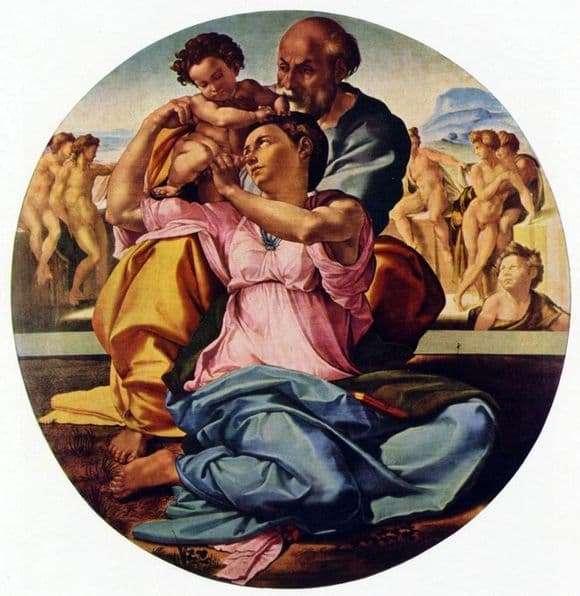
Michelangelo is one of the greatest masters of the Renaissance. First of all, the sculptor, he also painted, wrote poems, was a famous thinker of his time. Speaking of his ancestors, they mention Mesira Simone, Count di Canossa, but there is no documentary evidence of such an origin, and now it seems doubtful. At the time of the life of Michelangelo, the Count de Canossa, who was in good health at the time, recognized him as a respected relative and often invited him. Michelangelo had pleasant religious themes.
He was brought up in the family of the wet-nurse, and he learned to use soft clay almost before walking. His sculptures are recognized as masterpieces, but “The Holy Family” is a painting. One of his few paintings. Obviously, the sculptor wrote it. The Mary, Joseph and the little Christ inscribed in the circle form the so-called “screw composition”, attracting all the attention.
They look quite traditional – Joseph is bearded, Christ is curly, Maria seems to be merciful and reaches for her son – and only nude figures in the background are unconventional. In an era when any physicality was condemned, and any indulgence in the needs of the body was called a sin, their image was a bold move. But, oddly enough, contemporaries appreciated it – in the Renaissance, the presence of a naked suite was not so wild, even if it went against the traditions of icon painting.
In the muscles and skin of the bodies of naked people it is especially clearly seen how tactile, natural for the sculptor was Michelangelo’s perception. Knowing how to sculpt the muscles, the human body in all its glory, he writes how to sculpt – in relief, with skill, singing vitality and beauty in passing. His work is playing with physicality,
Description of the painting by Michelangelo Buanarroti “Holy Family”
